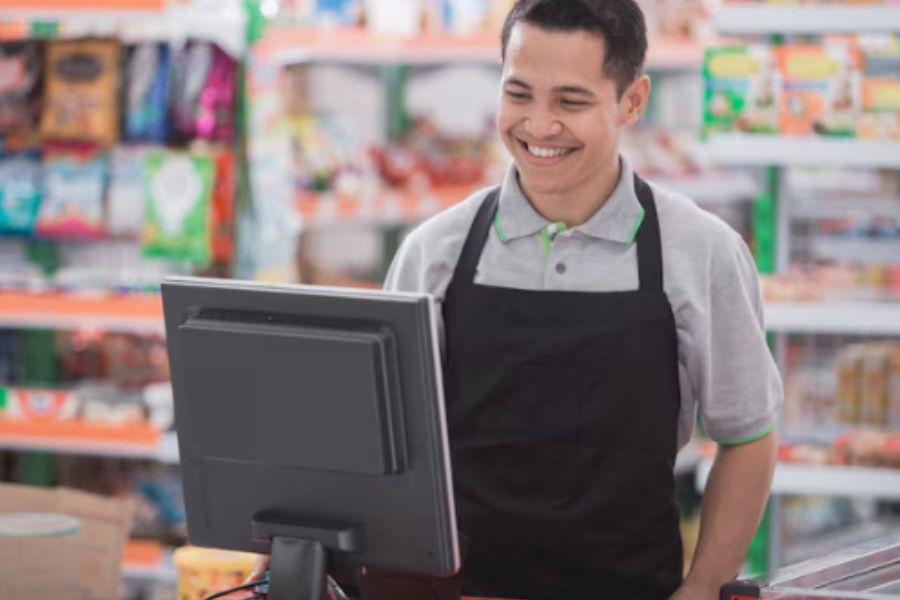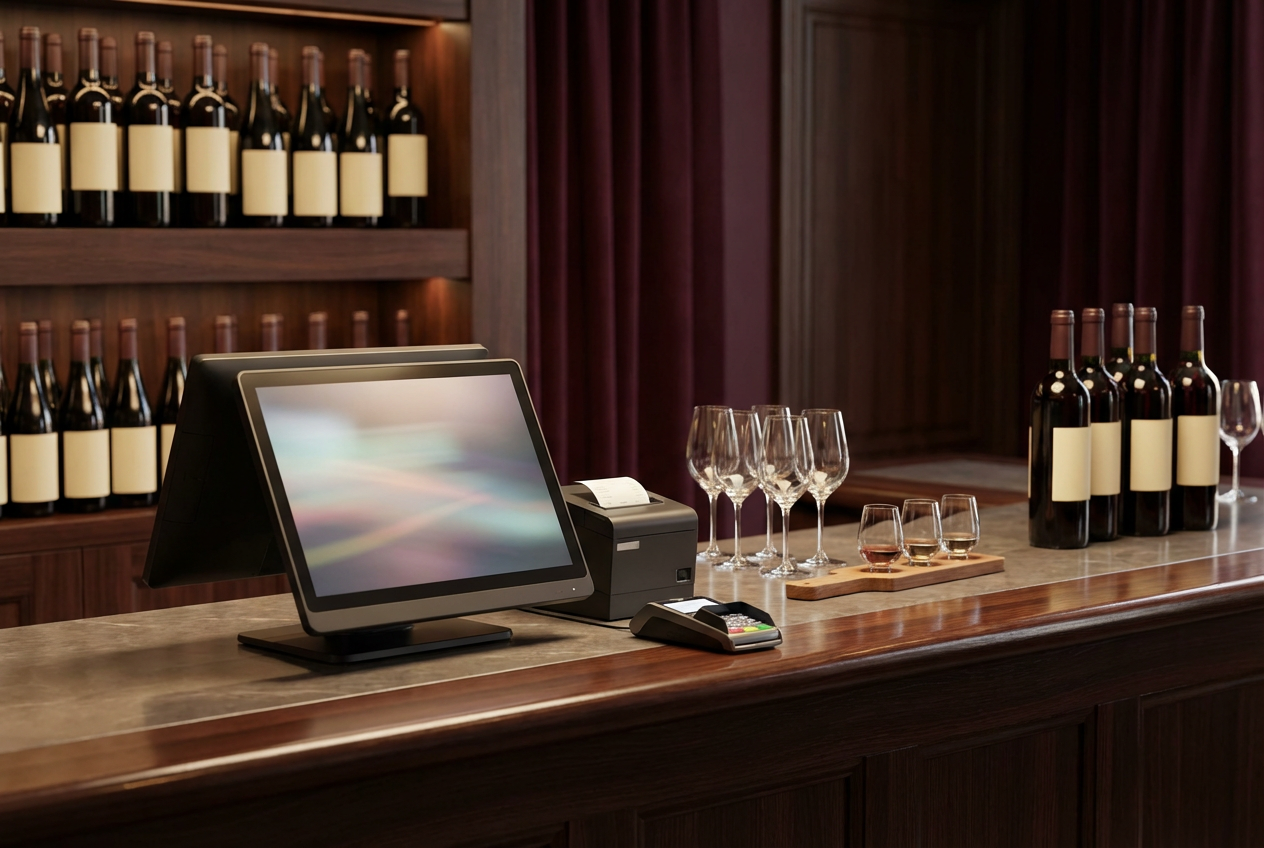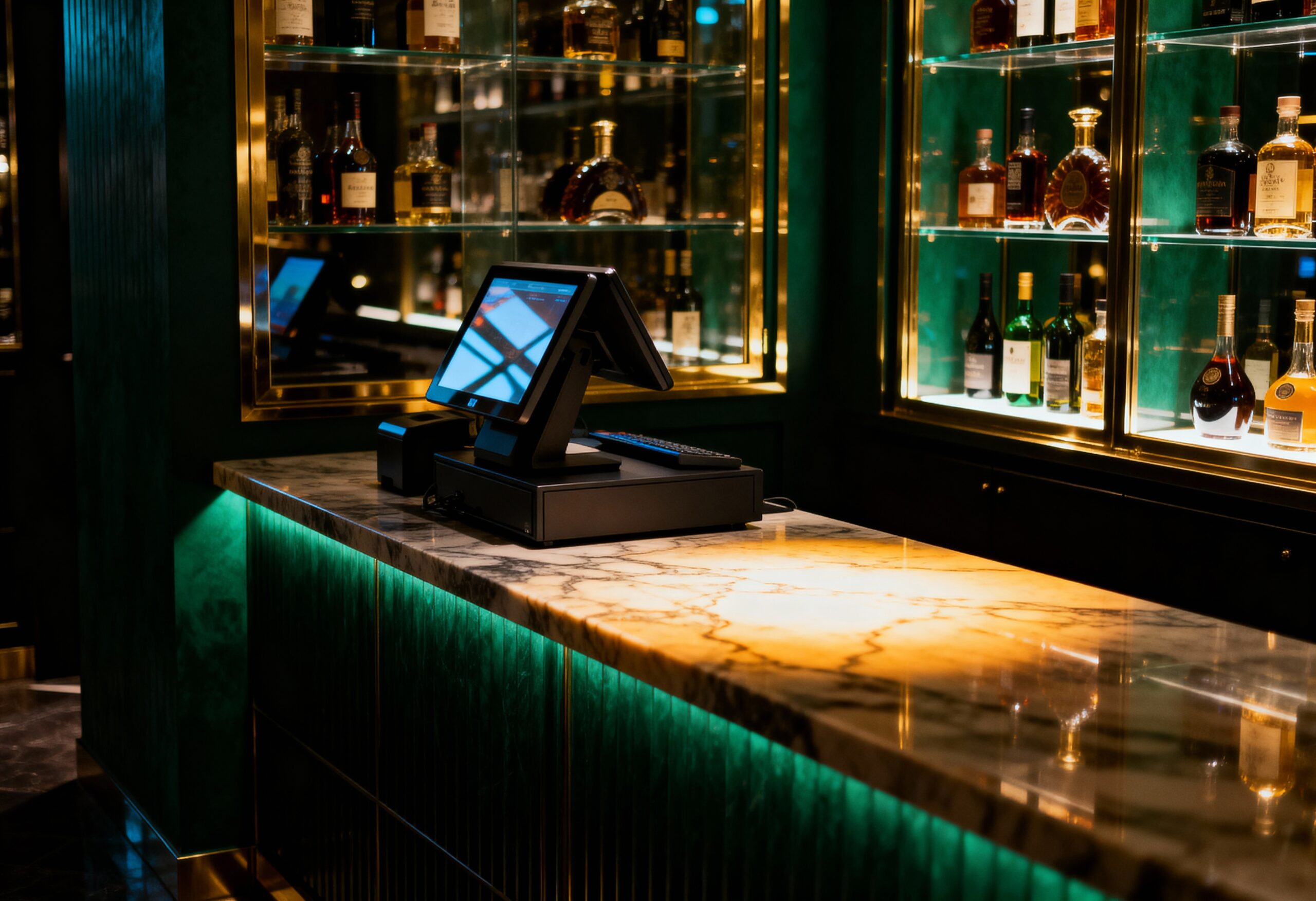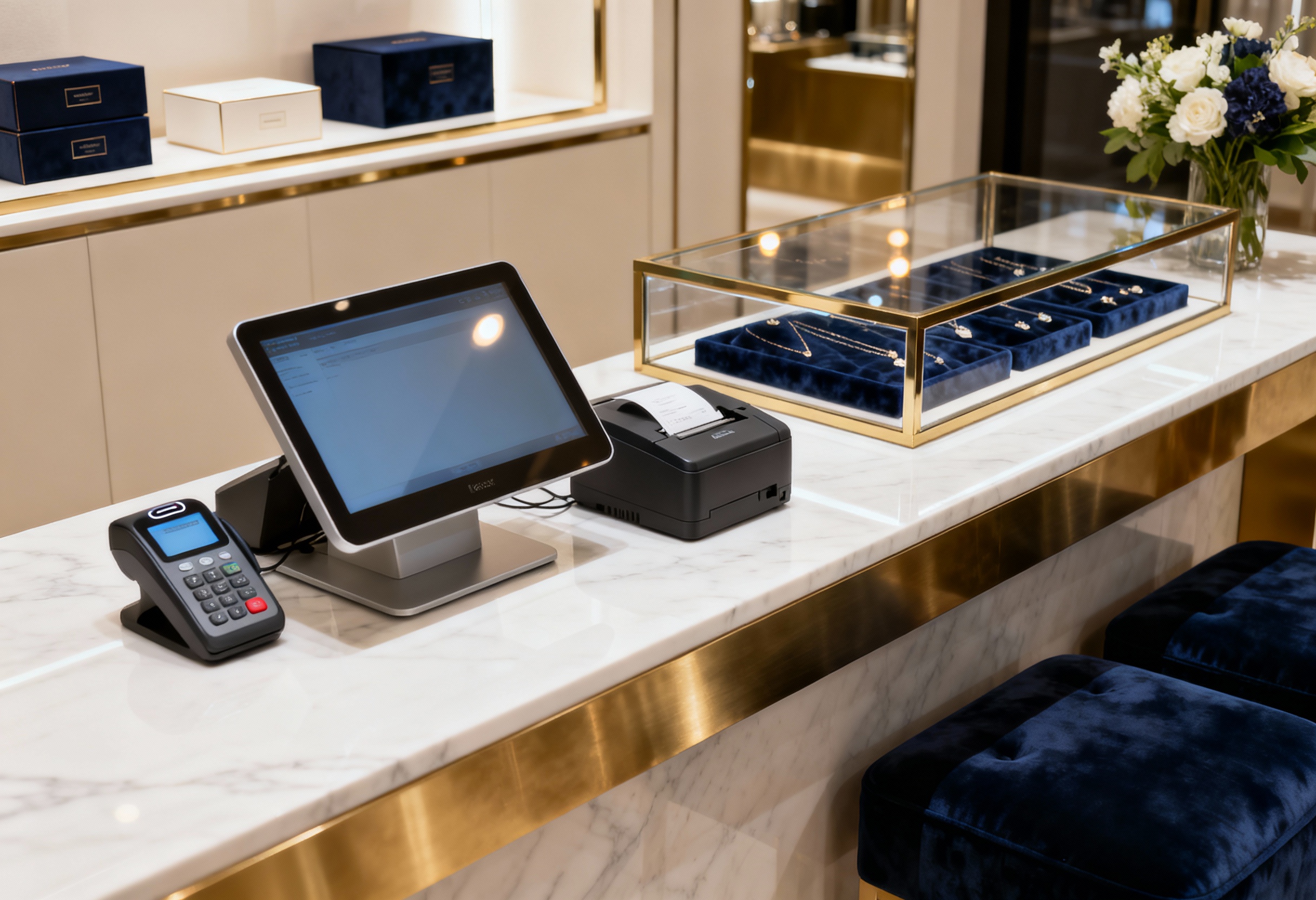Most convenience stores in Indonesia deal with narrow margins, high transaction volumes, and customers who expect fast, digital-first service. The best POS system for your convenience store Indonesia should simplify daily tasks, like inventory updates, payment processing, and staff coordination, without slowing you down. It also needs to support local payment methods, work during internet outages, and scale as your business grows. In this article, we’ll break down the key features that matter and the POS systems built to handle Indonesia’s retail environment.
Is your POS built for that pace? Can it keep up when shelves empty fast and queues pile up? Let’s look at what’s happening in the market and what your next POS must be ready for.
Highlights:
- High SKU turnover, layered promos, and cold-chain tracking demand a level of speed and precision that basic POS systems aren’t built to handle.
- Real-time inventory sync, QRIS and e-wallet integration, auto-reordering, promo engines, and offline mode are table stakes for modern Indonesian convenience stores.
Indonesia’s Convenience‑Store Market in 2025
More stores are emerging outside of the typical high-traffic areas. Indomaret and Alfamart are no longer just expanding in Jakarta; they are opening new outlets along the highways of Sumatra and in remote towns in Sulawesi. As freight logistics become more efficient, these corridors are becoming accessible for retail, prompting chains to move in swiftly to fill these gaps.
Shoppers aren’t slowing down, either. With more spending power, the middle class now wants things faster and closer. McKinsey estimates that Indonesia will add 90 million people to its consuming class by 2030, more than any country except China and India. That’s a huge shift, and convenience stores are right in the path of that growth. Midnight snack runs? No problem. C-stores are going 24/7 to match these habits, especially near transit hubs and residential clusters.
The government’s push for QRIS and cashless adoption is accelerating the process. MSMEs get subsidies for going digital, and local fintechs are flooding the market with wallet integrations. According to Indonesia.go.id, QRIS transactions surged 226.54% year-on-year in 2022, reaching 50.5 million users and 32.71 million merchants. That means any store still running manual systems will get left behind fast.
Reasons a Generic POS Falls Short for C‑Stores
A standard POS might work for retail chains selling shirts or shoes, but convenience stores run on a different clock.
- High SKU turnover and slim margins: A single outlet can stock thousands of SKUs, many with short shelf lives. Fast sales and tiny profits mean every second matters. A generic POS lags behind when inventory changes by the hour.
- Multi-format promos (mix-and-match, bundle pricing): Customers expect deals like ‘Buy 2 Get 1 Free’ or instant bundles. Most basic systems can’t keep up with layered promos or auto-discounts tied to basket logic.
- Speed at peak hours vs. accuracy after close: Morning coffee runs, evening crowds, late-night surges. Checkouts must stay fast. However, after hours, accuracy takes over. Reconciliation, voids, and refunds must match to the cent. Many POS setups fail at balancing both.
- Need for cold‑chain and expiry monitoring in grab‑and‑go food: Think milk, yogurt, ready-to-eat meals. These need batch tracking, expiry alerts, and first-in-first-out logic. A basic POS won’t suffice when spoiled stock means lost trust or, worse, health risks.
The fix? A POS built for the chaos of c-store life, not just clean retail counters.
Core Features Local Operators Should Demand
Most convenience stores in Indonesia don’t have time to mess with systems that ‘almost’ work. To stay sharp, local operators need POS setups that reflect the daily grind: fast pace, lean teams, and zero room for error. We’ve highlighted the must-haves that no c-store should overlook.
Real‑time Inventory Sync Across Outlets
Stock moves fast. One outlet sells out of instant noodles, another over-orders bottled tea. Real-time sync keeps every store aligned, showing what’s selling and what’s not, without waiting for manual updates. Advanced tools for dynamic stock control are what make a convenience store POS system stand out in this sector.
►►► Optimal solution set for businesses: Multi store POS, Next-gen POS, Inventory Management Software (MSI), Self Service, Automation, Backorders
QRIS & Top E‑Wallets Built‑In
Most shoppers now tap, scan, or flash their phones at checkout. Statista estimates Indonesia’s digital-payments market will top US $117 billion by 2025, so seamless wallet acceptance isn’t a nice-to-have. It’s survival gear for c-stores. A POS should support QRIS, GoPay, OVO, and Dana without plugins or add-ons. Built-in means no fumbling during payment, just scan and go.
Automated Re‑Ordering & Supplier Portals
No one wants to chase suppliers or guess when restocks will arrive. A smart POS system flags low stock and automatically places orders, sending them directly to pre-set vendors. Even better if it supports direct price updates and delivery status. Efficient order fulfillment features will keep replenishment tight and error-free.
Price‑Book & Promotion Engine
Every promo needs rules. ‘Buy 2, get 1’, ‘10% off for students’, or ‘Weekday discounts only’? A strong engine handles complex pricing without human input, keeping receipts accurate and margins intact.
Offline Mode with Automatic Resync
Internet down? The store keeps running. Sales, stock changes, and receipts get queued locally and sync later without data loss. That’s peace of mind for stores in areas with spotty connections.
Multi‑language UI and 24/7 Indonesian Support
Cashiers switch fast, and not all are tech-savvy. A user interface in Bahasa Indonesia (plus English, if needed) shortens training time. If something breaks, round-the-clock local support beats waiting on overseas teams.
Scalable Hardware Options
One small outlet might only need a tablet and a receipt printer. A larger one may use barcode scanners, scales, and cash drawers. The right POS runs on what’s available. No locked-in hardware, no forced upgrades.
The 6 Best POS Systems for Indonesian Convenience Stores
Picking the best POS system for convenience store Indonesia isn’t about big brands. It’s about smart fits. Each store has its own setup, pace, and quirks. These six systems are well-suited to the fast-turnover, multi-location world of Indonesian minimarts.
ConnectPOS
ConnectPOS is purpose-built for high-speed, high-volume retail. It helps minimarkets keep up with daily stock movement, complex pricing, and fast checkout, without cutting corners. Trusted by over 1,000 convenience retailers worldwide, including Smoke Arsenal and Departure Thailand, it’s a go-to system for Indonesian store operators.
It doesn’t just handle the basics like sales and stock. ConnectPOS transforms daily operations with real-time tracking, built-in QRIS payments, and auto-sync between online and offline systems. Every branch stays updated, whether it’s near Jakarta or on a remote island with patchy Wi-Fi.
Key Features:
- Fast checkouts with barcode scanning and second-screen display
- Offline mode with auto-resync, so there’s no downtime during outages
- QRIS-ready with GoPay, OVO, Dana, and multi-wallet support
- Customizable workflows, product variants, and local receipt formats
- Smart inventory tools: stock alerts, transfer, stock-take, and multi-source control
- Real-time sales analytics and customer behavior reports
- Integrated reward programs and mix-and-match promotions
- Supports self-checkout to cut queue times during rush hours
- Shift scheduling, staff performance tracking, and custom staff permissions
- Mobile payments and e-receipts for eco-friendly, quick service
- Works across iOS, Android, tablets, and PC. No proprietary hardware lock-in
Plans & Pricing:
- Standard (from $ 49/register): Core tools for payments, product sync, analytics
- Enterprise (Custom): For brands with 100+ outlets, with dedicated support and API setup
Whether it’s a one-outlet kiosk or a national chain, ConnectPOS scales easily. And with 24/7 support in Bahasa Indonesia, help is always within reach.
Reach out to us for a demo and discover how ConnectPOS can drive growth for your c-store.
Moka POS
Moka POS is a cloud-based solution made for busy small businesses. It’s lightweight, mobile-friendly, and focuses on quick sales processing, stock management, and CRM basics. Setup is simple, and most features are usable without extra hardware.
Key Features:
- QRIS and top e-wallet support
- Mobile-first interface with sales tracking
- CRM with customer tagging and notes
- Custom promotions and voucher codes
- Integration with accounting apps and printers
Best suited to smaller outlets looking for reliable, no-fuss software that gets the job done without complexity.
Pawoon
Pawoon delivers value for money and an intuitive experience. It helps retailers handle multi-outlet operations, assign cashier roles, and run basic inventory checks. It also supports integrations with popular local delivery and payment platforms.
Key Features:
- Android-based POS with offline access
- Real-time reporting dashboard
- Multi-store management
- QRIS payments and receipt customization
- Discount setup and sales tracking
A great match for minimarts seeking simplicity, affordability, and enough flexibility to grow gradually.
Olsera POS
Olsera was designed with hybrid selling in mind. It links online and offline sales, making it easier to manage stock across physical locations and eCommerce platforms. Product bundles, expiration dates, and tiered pricing add more control.
Key Features:
- eCommerce integration with real-time inventory sync
- Product bundling and discount logic
- Expiry and stock level alerts
- Tiered pricing for different customer groups
- Mobile and desktop compatibility
This option stands out for stores venturing into online sales or managing perishable goods alongside general inventory.
iReap POS
iReap POS offers solid inventory tools with offline capabilities. It supports QRIS payments through Espay, batch tracking, and sales reports across outlets. The interface is straightforward, making it easy to train staff quickly.
Key Features:
- Batch and expiry tracking
- QRIS integration (Espay)
- Cloud backup in PRO plan
- Cost-of-goods and item profitability reports
- Multi-user and role setup
Well-suited to minimarkets that need strong expiry management and offline flexibility, especially in areas with unstable internet.
Qashier
Qashier combines stylish hardware with essential POS functions in one portable terminal. It offers plug-and-play simplicity, QR scanning, payment processing, and customer loyalty features in a compact form factor.
Key Features:
- All-in-one POS device (printer, touchscreen, QR reader)
- Supports QRIS and major digital wallets
- Loyalty program tools and digital receipts
- Product catalog and inventory management
- Cloud reports accessible remotely
Ideal for operators who want a sleek, all-in-one POS setup without juggling multiple devices or apps.
How to Run an Effective Vendor Selection
Vendor demos always look polished. We’d rather break it for you first so you don’t find out the hard way during peak hours.
- List must-haves: Real-time sync, QRIS payments, offline mode, promo tools. Skip the fluff.
- Separate extras: Things like self-checkout or loyalty programs are nice but not always urgent.
- Compare pricing models: SaaS (monthly per register) vs. per-transaction. Check for hidden costs like hardware or setup fees.
- Factor in scalability: Can the POS grow with your store count or inventory size?
- Run a pilot: Test the system in one outlet, not your whole chain.
- Track real results: Measure basket size, refund rates, and time-to-close.
- Ask your staff: If it slows them down or causes confusion, don’t scale it.
- Approve only if it works: Don’t commit unless it proves it saves time and avoids mistakes.
Roll‑Out & Staff Training Tips
Switching POS systems can go smoothly if done with focus and clarity. Start small, train fast, and keep teams engaged.
- Clean up SKUs: Remove duplicates, outdated items, and unused variants. Garbage in means garbage out.
- Migrate only what matters: Bring over active products and current customer data, and leave the rest.
- Train in micro-sessions: Keep cashier training short and focused. Fifteen minutes per topic is enough.
- Use dashboards as motivation: Show real-time accuracy rates and reward top scanners. Small wins build habits fast.
- A clear rollout plan makes change less painful and gets your team on board without slowing down the shop.
FAQs: Best POS System for Convenience Store Indonesia
1. What are the essential features to look for in a POS system for Indonesian convenience stores?
Look for QRIS support, real-time inventory sync, mix-and-match pricing, and offline mode.
2. Can POS systems handle multiple store locations and centralized management?
Yes. Most leading systems sync data and settings across all branches in real time.
3. Is it possible to operate the POS system during internet outages?
Absolutely. Good systems queue transactions offline and resync when back online.
Final Thoughts
Speed, accuracy, and local fit matter most. The best POS system for convenience store Indonesia isn’t the most expensive. It’s the one that handles promotions, stock, and payment chaos without slowing you down, and ultimately empowers your long-term growth.
ConnectPOS ticks all those boxes. Real-time sync, QRIS support, offline mode, loyalty tools. It’s all there. And with fixed pricing and 24/7 support, scaling is simple.
Want to see it in action? Reach out to us for a walkthrough tailored to your store.
►►► Optimal solution set for businesses: Shopify POS, Magento POS, BigCommerce POS, WooCommerce POS, NetSuite POS, E-Commerce POS



